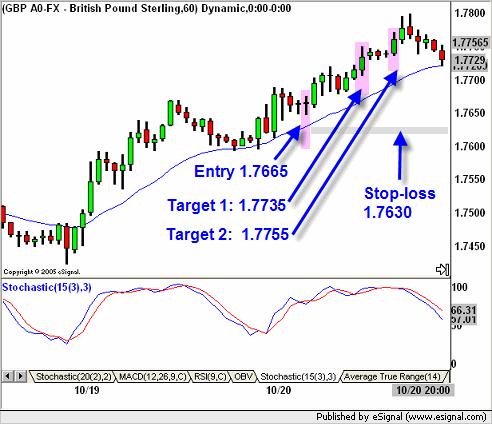These setups may trigger in the next 24 hours
Dave Floyd is a professional FX and stock trader
based in Bend, OR and the President of Aspen Trading Group. Dave’s approach to
FX combines technical and fundamental analysis that results in trades that fall
into the swing trading time frame of several hours to several days. To learn
more about how Dave trades,
click here.
Since Monday we have had a solid move higher in the dollar (DXC)
and have traded accordingly. For those that placed trades based on our 24-Hour
Targets from
Monday, you did well, as the number of pips captured was 163 – a
solid performance.
Now that the Fed decision is behind us, the Dollar Index
(DXC) remains firm and poised to trade back towards the 52-week highs at 90.75,
however, the ride may very well be a bit bumpy as the intra-day charts look a
bit heavy. Key support on the DXC is seen at 89.85, while a push through
resistance at 90.40 will certainly ignite some buying and bring the break-out to
new highs that much closer.
EUR/USD is trading just above some key support at 1.1900 – a
break of that level could expose lower levels.
The 24-Hour Targets noted below are an excellent and simply
way to position yourself for a stronger dollar.
Wednesday’s 24-Hour FX Targets

————————————-
Notes/How To for The 24-Hour FX Targets
Today’s FX traders are now demanding a more systematic
approach, and this new feature will nail those desires right on the head. With
our 24-hour forecasts you have specific entry prices, stop-loss and price
targets.Â
Entries:Â entry prices are meant
to be taken at the time of posting by simply placing an order to buy or sell at
the market. Targets will typically be posted by 5 AM PDT.
Stop-Loss:Â we suggest that all
traders place a stop-loss equivalent to ½ of the value of the projected gain in
pips. For instance, if the price target for the EUR/USD is 1.2200, and it is
trading at 1.2100 at the time (100 pip gain) of the forecast, we would suggest
setting a 50 pip stop loss (1.2050).Â
We also discuss a basic trailing stop strategy at the end of
this article.
Exits:Â traders should take
profits when the ‘Target Price’ is achieved.  If, by 5 AM PDT the following day,
the stop-loss or target price has not been achieved, simply close the trade at
market.
Let’s look at an few example as a way to illustrate how this
will work. Below is a screenshot from Thursday October 20th, it is exactly the
same format that will be posted here each Monday and Wednesday.

The far right column, 24-Hour Targets, is simply our estimate
of where the pair will trade towards during the next 24-hours. A ‘N.A’.
simply indicates we do not have a price target.
The ‘Current Bias’ column will only show a bias for the
pairs that are highlighted ‘blue’ as these are pairs that we also recommend on a
discretionary basis.
At 5 AM on 10/20/05 GBP/USD opened at 1.7665. The
price target, as noted above, is 1.7735 – a 70 pip gain if achieved. The
initial stop-loss would be 35 pips, or 1.7630.Â

GBP/USD went on to achieve both targets.

Naturally, not all of the forecasts will play out, and like
most systematic approaches, the number of iterations will increase your
success. Pairs like USD/JPY and EUR/USD did not achieve their
targets and were stopped out, resulting in a loss of 65 pips, while AUD/USD,
USD/CAD and USD/NOK easily offset the 65 pip loss with solid
gains.
Trailing Stops:
Traders may also look to employ a trailing stop strategy to
protect gains. We suggest using a trailing stop equivalent to 1/4 the value of
the targeted gains. So, in the example of the GBP/USD above, the target is for
a gain of 70 pips, therefore a trailing stop of 17 pips might be a prudent
approach.
Ultimately the decision is yours. Other traders/clients
simply use our forecast(s) as a guide and then identify their own entry points
based on their trading methodology.
As always, feel free to send me your comments and questions.
